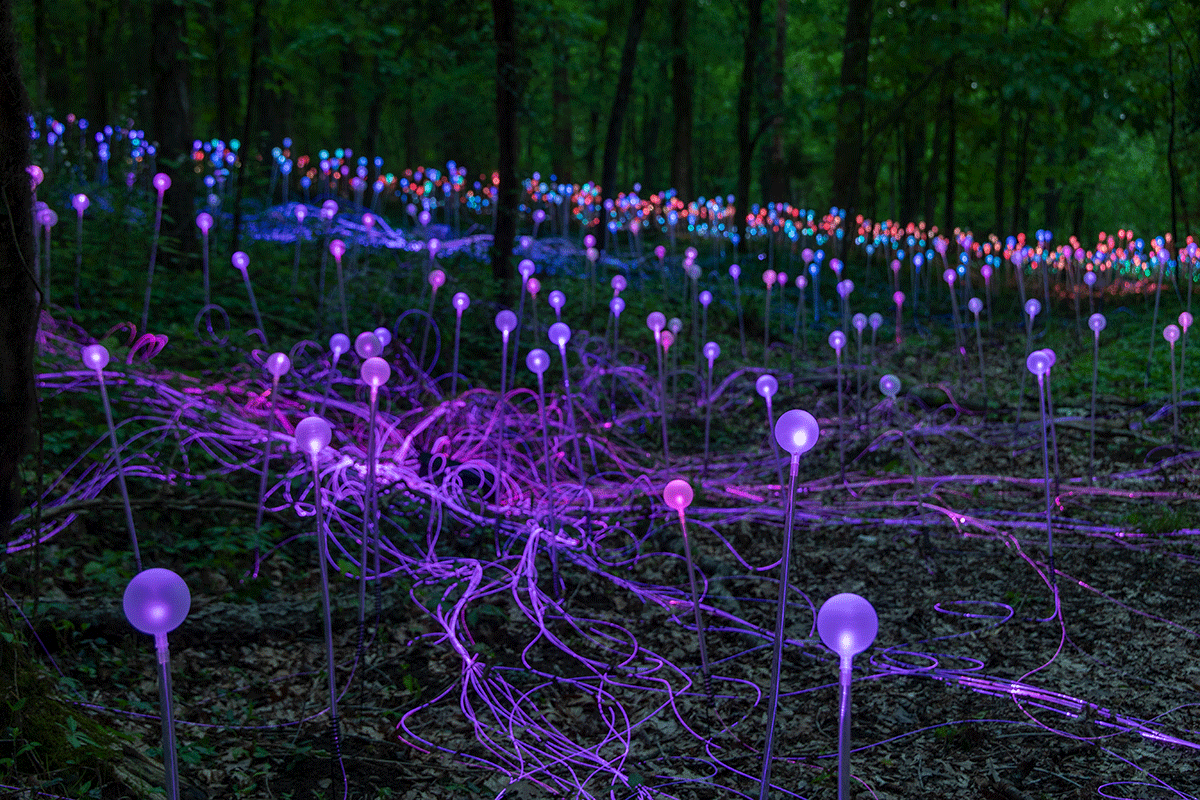
Acclaimed artist Bruce Munro is bringing his immersive art installation Field of Light to Salcombe, Devon, to help mark the Royal National Lifeboat Institution’s 200 years of saving lives at sea – in which time the institution has saved more than 146,000 lives.
The celebrated work’s 20,000 fibre-optic stemmed spheres will be installed across 35,000 square metres of field opposite Salcombe Harbour, from where the public can view Munro’s work, which opens on 5 October and will run until 10 January, 2025.
Field of Light has been displayed at locations around the world, and is now helping the charity in its mission to save lives at sea for another 200 years and beyond. Supporters of the RNLI can sponsor a stem at the installation, all proceeds of which will go to the charity.
Salcombe has had an RNLI lifeboat station since 1869, and the town holds a special significance for the visual artist. Bruce Munro holidayed in the resort as a child, painting pictures during his family’s regular visits, and then as a young man worked for one of Salcombe RNLI’s crew.
He said: “I worked for one of the crew – he had a restaurant here – and when you live in the town you realise how important the RNLI is. Even today, with all the equipment, they’re still nuts to go out when you see a rough sea. I am hopeful that in Salcombe, it will also inspire, creating wonderment but also drawing attention to the mysteriousness of the landscape and the darkness that surrounds it.”
Jayne George, RNLI fundraising director said: “The things our supporters do to raise the profile of and help raise funds for the RNLI never ceases to amaze me, but Bruce Munro’s art installation is set to be one of the more spectacular I have seen. The RNLI is very grateful that he has decided to bring his acclaimed art installation, Field of Light, to Salcombe to celebrate our 200th anniversary, and we can’t wait to see it in place.”
The inspiration for the work came while travelling Australia with his now-wife in 1993. Reaching the landmark Uluru – also knows as Ayers Rock – he was struck by the energy the place held, and wanted to find a way to express what he had felt the landscape held. It was more than ten years later that he realised this dream, and Field of Light was born on his land. He installed 15,000 lights – previously used for indoor installations – in a field, and invited the public to view it. Since then, Field of Light has grown in complexity, become more eco-friendly, and birthed new iterations of the work, but “connecting people with each other” remains at the heart of his work.













